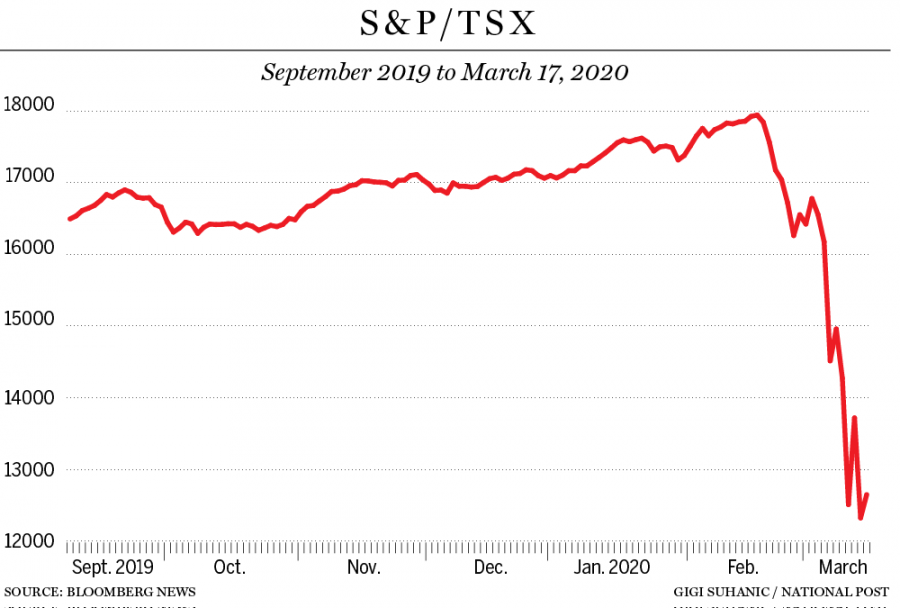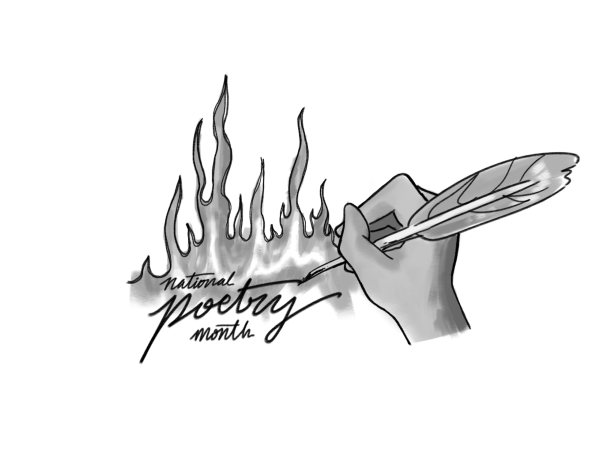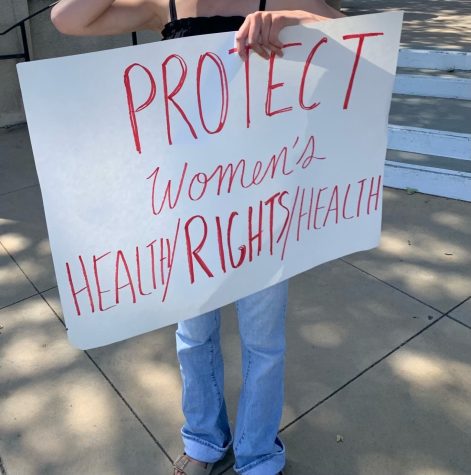Stock market crash heralding in time of uncertainty
Most students at CHS likely do not pay attention to the stock market, which is warranted. Students are teenagers who are often too busy thinking about a whole other world of tasks and events to be worrying about whether huge multi-billion dollar companies are making as much money as they could be. But recent “grumblings” in the finance world could have pronounced and hard-hitting effects on not only current students at CHS, but for people all over America.
The Dow Jones Industrial Average Index (DJIA) is made up of the 30 largest companies that are considered to be the “leaders of the United States’ economy” by the Wall Street Journal and is widely seen as one of the benchmarks for the health of the economy. Generally, for the last six months of 2019, the DJIA and subsequently the whole market was performing exceptionally well. Traders on the floor of the New York Stock Exchange (NYSE) donned smiles as it appeared the DJIA would breeze past 30,000 points, and redditors on r/wallstreetbets celebrated in a crude (crude is an understatement) manner at the seemingly unstoppable US economy. However, on February 24, a global sell-off of stocks kick-started a global stock market crash, ultimately dropping the DJIA from 29,348.03 points to 18591.93 points (as of March 23, 2020), a drop of nearly 40%. To some, this number may seem almost minute, but make no mistake: this number is gargantuan. On Monday, March 16, the market suffered its worst intra-day since 1987, as the DJIA moved from about 23,000 to about 20,000. The Washington Post reported that the DJIA suffered its worst ever quarter in its 135 year existence. Eight out of the 10 worst days in DJIA history took place in the months of February and March this year.
The crash was the result of a number of things. The first is a more commonly known reason; the novel coronavirus, COVID-19. Another is less apparent, and that is oil prices falling dramatically in the first week of January due to rising tensions between Saudi Arabia and Russia.
If governments want to slow the spread of COVID-19, then they will have to mandate or urge citizens to isolate themselves at home; something that most state governments have done in the past three weeks. This has made investors very fearful for the economy because people are unable to go out and spend the money as they usually would in shopping malls, dine-in restaurants, etc. In addition to that, workers are also either not going to work or are having their hours reduced. According to a poll conducted by the Los Angeles Times, 18% of workers have either lost their job or have had their hours reduced, as of March 17. All major industries are being hit tremendously hard right now. Even industries that were thought to be robust such as Thailand’s tourism industry and the pharmaceutical industry have sustained hefty losses. The global film industry has suffered, as many US studios have been pushing back their movie releases, as fans would likely not be able to visit a movie theater to watch it. Numerous major US artists’ tours have either been postponed or canceled. Even the fashion world has been affected, as Fashion Week events and long-awaited sneaker releases are being pushed back. Cumulatively, this is a lot of lost money for these industries, so the market is reacting. President Trump may also have contributed to the depth of the crash as for many days he downplayed both the severity and the number of COVID-19 cases in the US. Some saw this as a desperate bid to attempt to calm the market, but shares continue to fall and the DJIA is gushing red.
The oil price drop was a casualty of the havoc COVID-19 is causing. For background, Organization of the Petroleum Exporting Countries (OPEC) Member States include Algeria, Angola, Equatorial Guinea, Gabon, Iran, Iraq, Kuwait, Libya, Nigeria, Republic of the Congo, Saudi Arabia, the United Arab Emirates (UAE), and Venezuela. While Russia is not in the OPEC, it had an agreement with them to regulate its own oil production similarly to the OPEC’s, so as to reduce competition between them. On March 6, the OPEC was bickering with non-allied Russia over how much to slash the price and production of crude oil in response to COVID-19 drastically reducing oil demand. Russia planned to keep selling its oil at the same price regardless of the OPEC meeting. As a result, Saudi Arabia responded in kind the next day when it slashed its own oil prices to the lowest in 20 years in a bid to flood the global oil market with as much Saudi oil as possible. This was the first shot of an oil war. Now that the price of oil is so low, oil-producing countries like previously mentioned Saudi Arabia and Russia will step up their production so they can at least break even. The oil price drop was a significant force that drove the DJIA off a cliff.
The US government absolutely had to respond to the economic crisis that was developing. After weeks of doubt and shifting blame while more and more Americans tested ‘positive’ for COVID-19, President Trump declared a national emergency on March 13. At this point, there were 1,703 confirmed cases in the US. The declaration freed up $50 billion dollars for emergency relief. While this was a long-needed injection of funding for containing and meeting the problem head-on, critics of President Trump have remarked how late this action really was, as they say he had more than three months to prepare the US for COVID-19. It was reported in January of 2019 that 40% of Americans were one missed paycheck away from poverty, and as more businesses are shuttered and shops close, this statistic was put to the test. That is why some proponents of Universal Basic Income (UBI) and a larger, stronger social safety net were feverently pushing to get those benefits cemented in law. As of March 26, Business Insider reported that 3.3 million Americans had filed for unemployment benefits in a single week, but BI says that number could be much higher. This obliterates the previous record of 695,000 people set in 1982. The US reacted by passing The Coronavirus Aid, Relief and Economic Security Act (CARES), which is worth an eye-popping two trillion dollars. This comes as cases sky-rocketed to more than 100,000, but the number of cases will certainly increase considerably. This number cemented America’s position as the leader in confirmed cases. The record-setting bailout includes a remarkable measure giving Americans making less than $75,000 a year $1,200 dollars plus $500 per child. Historically, UBI was seen as a ‘socialist policy’ as Republicans always resisted giving Americans “handouts”, but after they have seen what damage has been done to the US, they opened their eyes to the reality millions of Americans are feeling. The plan beefs up the unemployment benefits program, greatly bolsters the public health sector, and gives money directly to states. The Act also reportedly gives $500 billion to large corporations whose bottom line has been decimated. In a stock market desperate for any shred of good news, it rose 1284.35 points or 6.96% at the sight of the government finally taking action.
Some experts say that the re-election chances for President Donald Trump have been hurt so badly by the crash that investors are fearing that a Democratic candidate would be swept into office and would begin to regulate everything; from the energy sector to calorie labels on the menu at McDonalds. Historically, this would make sense. FDR was swept into office after the Stock Market Crash of 1929 and subsequently the Great Depression, former President Barack Obama was elected following the Great Recession of 2007–08. But investors have seen President Trump’s trademark “America First” stance as more than favorable for the US economy, with investors seeing a 25% rise of the DJIA in 2019 alone. This scenario is interesting, but the effect this is having on the market is likely minuscule.
The last time the DJIA could be seen dropping with this magnitude was in the Great Recession. There is much that could be said about this historical event, but for the purposes of this article, the graduates from colleges around the US of the years following the recession shall be put under the microscope. Students across the US. as well as across the world had a much harder career path laid out ahead of them once they graduated, as the jobs market dried up overnight. The causes of the two drops may be different, but the effects are mostly the same, if not similar. People lose jobs, homes, retirement savings, and opportunities. A number of people sadly committed suicide after the Great Recession, with the suicide rate in the US increasing 4.8%. A recession can push someone so far down that it takes a decade for that person to reach the normal track. People who graduated a couple years after, say Class of 2012, ‘13 and ‘14 did not have to struggle as much as those who graduated in 2009, or 2010. Now the economic ramifications of COVID-19 will likely have a comparable fallout for those in school or graduating soon.
The DJIA fell almost 40% this year, but during the Great Recession the Index dropped around 50%. Comparatively, the DJIA fell rather spread out over the span of two years, while the stock market crash of 2020 dropped the DJIA over a period of more than two months. Gross Domestic Product (GDP) fell 4.3% from the peak in 2007 to 2009. CHS AP Economics teacher Ryan Easton expands on GDP.
“Within GDP there are four components: consumer spending, business spending, government spending and net exports,” Easton said. “These four components combine to create a dollar value of all of the final goods and services produced in a particular country.”
The US could see a GDP decrease along the lines of the Great Recession. If the GDP drops anywhere near those levels, a savage cycle ravages the workforce: production rate drops, people lose jobs, less money in the market to purchase goods, and production rate drops further.
“The unemployment rate is also a great measurement of the economy, but that has an inverse relationship to GDP. So you can assume that if GDP went down, the unemployment rate would go up,” Easton said. “With GDP crashing down, the unemployment rate will skyrocket. [during the week of March 15 to March 21], unemployment claims jumped by 3.2 million.”
The way to end the cycle, kickstart the economy again and get people back to work is to get a government economic stimulus package going.
“There is one bright side. Remember, the last part of the GDP formula is government spending. Congress wrote a bill authorizing the government to increase spending by $2 trillion,” Easton said. “Hopefully that increase in government spending will offset the decrease in consumer and business spending and net exports.”
COVID-19 will continue to dominate headlines and hemorrhage markets for a long time. Schools will lengthen their closure or close altogether, and ordinary American life will grind to a halt. There will be some very hard and painful months ahead for America and the world. There will continue to be a lot of bad news circulating through all the channels of media out there. But those who are fortunate enough to have a chance to be happy, healthy and safe, should not waste the given opportunity by thinking everything is alright once the case numbers inevitably go down. Please stay indoors and stay safe.
Hello there! Our goal is to provide relavent, engaging journalism for readers of all ages. Your donation will support the student journalists of the Wolfpacket at Claremont High School, and will allow us to purchase equipment, print our monthly issues, and enter in journalism competitions. We appreciate your consideration!

Jaiden Curlin is a Section Editor for the Opinions Section. Curlin has been a member of the Wolfpacket for four years; two of which as an Opinions Section...











